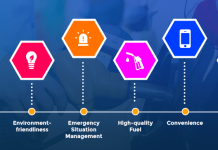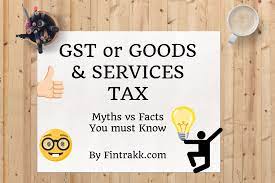In recent years, Making Tax Digital has been a hot topic of discussion among taxpayers in the UK. The UK government initiated the Making Tax Digital (MTD) project. It aims to simplify and digitize the tax reporting and payment process.
Despite the scheme’s various advantages, several misunderstandings and doubts among taxpayers have led to confusion. Let’s bust some of the prevalent myths and misconceptions about Making Tax Digital with factual information and offer a better understanding of the program’s requirements and benefits.
What is the Making Tax Digital (MTD) Scheme?
The UK government’s initiative with Making Tax Digital (MTD) is to modernize and digitalize the tax system for individuals and businesses. As per the scheme, taxpayers must maintain digital records of their business transactions with authorized software or applications. They must also use this system to routinely file their tax returns to HM Revenue and Customs (HMRC).
More About MTD
Due to Making Tax Digital’s (MTD) expansion in the United Kingdom, all businesses registered for VAT must maintain digital records from April 2022, impacting roughly 1.1 million businesses.
Furthermore, from April 2024, MTD will be broadened to include Income Tax for self-employed businesses and landlords above the limit. Even though roughly 25% of businesses above the threshold have already registered for MTD voluntarily, there are still approximately 750,000 businesses that must prepare for this new legislation.
Common Misconceptions of MTD
There are a lot of things that need to be clarified about MTD. Let’s clear up common misunderstandings about Making Tax Digital (MTD) for businesses.
1.MTD Only Applies to Large Businesses
It is a common misconception that the regulations for Making Tax Digital (MTD) are not yet in effect, but that is incorrect. As of April 2019, specific businesses registered for VAT must maintain digital records and use specialized software to submit their VAT returns. Presently, all VAT-registered businesses must comply with these regulations.
In the future, MTD will also apply to Income Tax, and self-employed individuals and landlords earning over £50k must adhere to the rules from April 2026, while those earning over £30k from April 2027. Although there is still some uncertainty on the compliance of partnerships, it is crucial to prepare for MTD now to avoid future fines or penalties.
2.MTD is Unpopular
There are various opinions regarding Making Tax Digital (MTD). However, numerous businesses have registered for it and hold a favorable outlook toward the scheme. According to the assessment by the UK government, as of March 2020, 1.4 million businesses have adopted MTD for VAT, encompassing businesses that had sales lower than the VAT threshold and had opted for MTD voluntarily.
3.MTD is Too Technical for Most People
Despite what many people might think, MTD is relatively simple. Numerous businesses already handle their taxes digitally via a digital tax account, and the majority of Self Assessment tax returns were submitted online in 2020. HMRC offers guidance and assistance to ensure the process is as straightforward as possible.
4.Spreadsheets are Better than Digital Tax Software
There is a commonly held belief that spreadsheets are an adequate substitute for digital tax software. However, the reality is that accounting software compatible with Making Tax Digital (MTD) offers far greater benefits.
Besides delivering tailored business insights, automation, and a real-time view of your finances, many software grants you access to a knowledgeable support team. Studies have revealed that most spreadsheets contain mistakes that are hard to detect and rectify.
5.HMRC Will Provide Free Software
Despite common misconceptions, HMRC does not provide software for Making Tax Digital. To comply with MTD guidelines, businesses must employ MTD-compliant software, which can solely be obtained from specialized third-party vendors.
6.Digital Record Keeping is Going to Be Difficult
While switching to new software can take some time to get used to, using digital record-keeping software can save time in the long run. It provides a clear picture of a business’s finances and automates daily administrative tasks such as sending late-payment reminders. Businesses can handle their quarterly revisions, End of Period Statements, and ultimate declarations for MTD for Income Tax and send them directly to HMRC from the software.
7.Switching to Digital Accounting is Going to Be Stressful
Moving towards digital accounting might appear intimidating, but HMRC’s 2020 report reveals that several businesses have discovered that adopting MTD for VAT was less challenging than anticipated.
Additionally, software providers and HMRC offer assistance to aid businesses in transitioning. The advantages of digital accounting, such as efficient accounting and precise tax reporting, can eventually alleviate stress and save time.
Conclusion
In conclusion, businesses must avoid misunderstandings concerning Making Tax Digital and the shift to computerised accounting. Despite some belief that MTD regulations are irrelevant to them or that digital tax software is overly intricate or overwhelming, the truth is quite the opposite. By adopting digital bookkeeping software, companies can enjoy customised analytics, time-saving automation, and an up-to-date overview of their financial situation.
Moreover, The Making Tax Digital Guide contains effective strategies to enhance your MTD approach. With the recent announcement that MTD for ITSA regulations has been postponed from April 2023 to April 2024, businesses have more time to refine their plan.

























